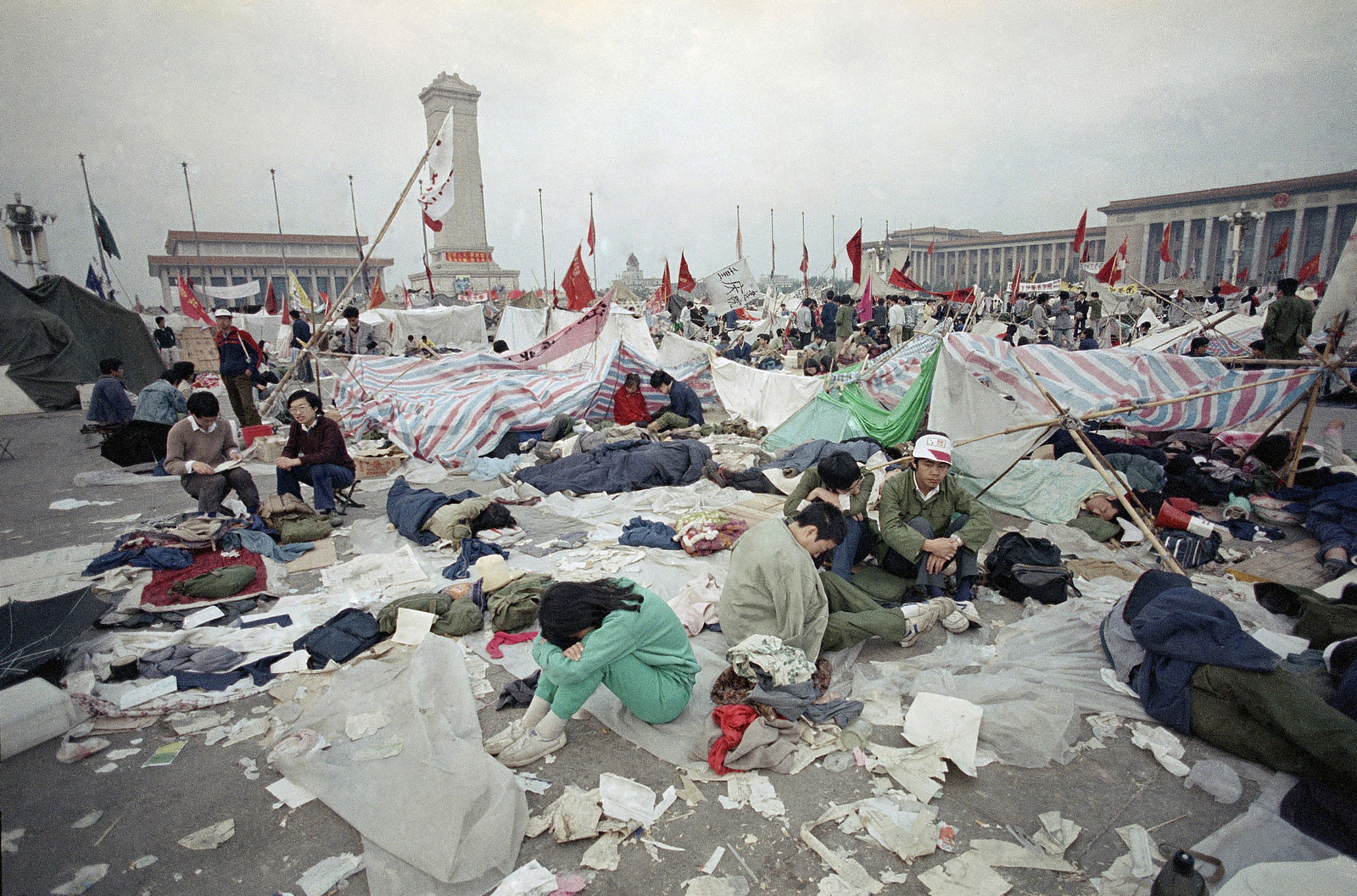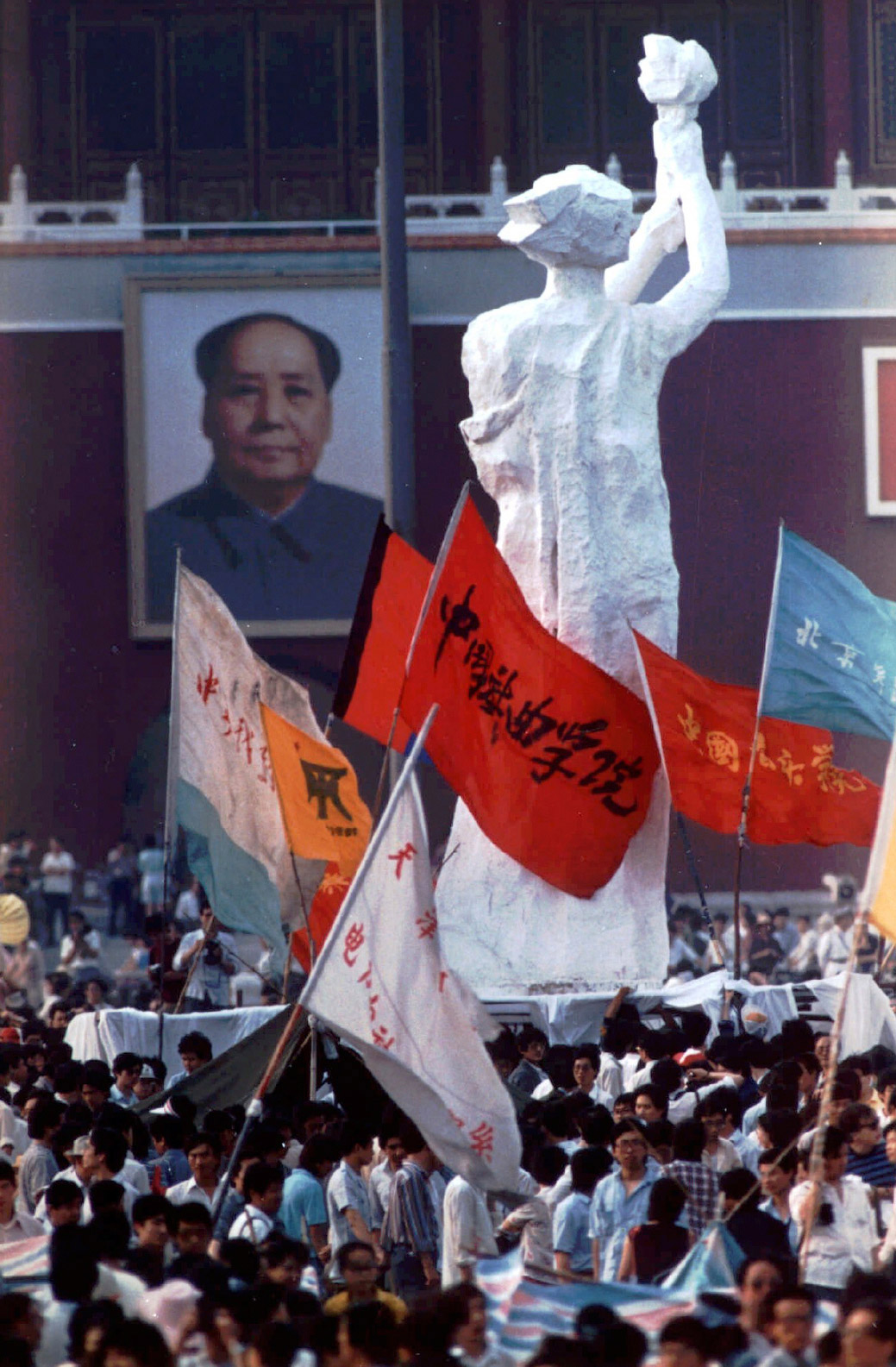1989 Tiananmen Square Incident: Chinese Students’ Debate for Democracy
Protests
On May 13, a large number of protesters began a hunger strike, which was emulated across similar protests in China. With each movement the protesters made, the Chinese government became increasingly uneasy. This was amplified by the visit of the Soviet Union’s Prime Minister Mikhail Gorbachev, who was supposed to be received at Tiananmen Square and was instead welcomed at the airport. This incident brought the situation to light in the eyes of western media, eventually leading to international publicization.
“In 1989, I was on Tiananmen Square with the students, living in their makeshift tents and joining their jubilant singing of the Internationale. In the two decades since, each time that I have gone back, visions from those days seem to return with increasing persistence.”
–Ma Jian

Litter surrounds students protesting in Tiananmen Square on May 28, 1989. Credit: Jeff Widener/AP
On May 20, insistent on halting protests, the Chinese government declared martial law moving 250,000 troops into Beijing to “firmly stop the unrest”. Despite this, hundreds of thousands of people continued to protest in Beijing and other cities of China.

A statue called The Goddess of Democracy, which was erected in just a few days, faces a portrait of communist leader Mao Zedong on May 30, 1989. The statue was modeled after the Statue of Liberty. Credit: Jeff Widener/AP

Chinese military items, including rifles, helmets and a hat, are displayed in Tiananmen Square during the pro-democracy demonstrations. Credit: Jeff Widener/AP
By the end of May, more than a million protestors had gathered in Tiananmen Square. They held vigils and marched, countless images and hours of footage of their movement making their way to western audiences and attracting even more attention.